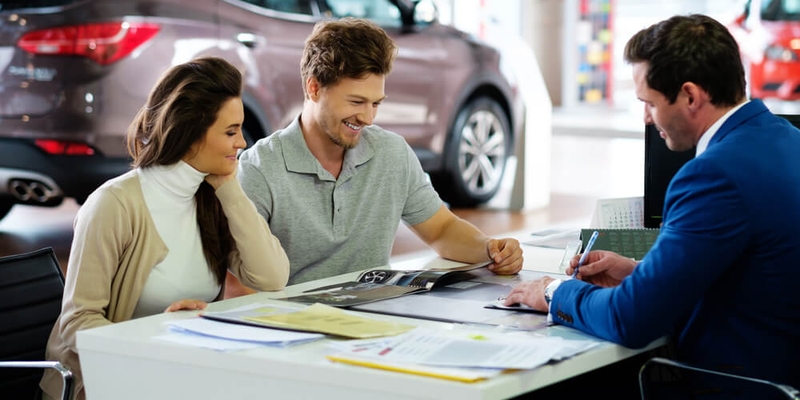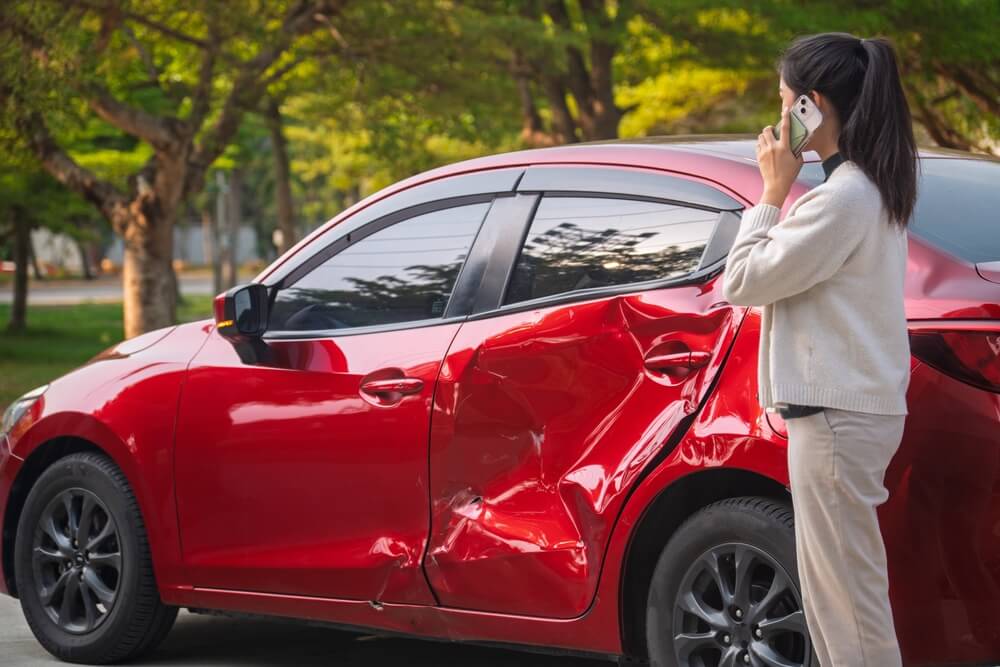
If you are not redirected within 30 seconds, please click here to continue.
Samedi: 10h – 16h HAE

If you are not redirected within 30 seconds, please click here to continue.
If you are not redirected within 30 seconds, please click here to continue.
How does a vehicle trade-in work?

If you’re looking to upgrade to a newer, better vehicle, you have two options when it comes to getting rid of your old one: You can sell it privately or trade it to a dealership in return for credit on your next car purchase.
There are pros and cons to each method – you’d likely get more from selling your car, but trading it in is much easier to do, and comes with tax benefits.
Understanding the trade-in process can help you get the best deal possible. Whether you're trading a fully paid-off vehicle or one that's still financed, here’s everything you need to know before heading to the dealership.
What happens when you trade in your vehicle?
Essentially, a dealer will assess the value of your current car and apply that value as a credit toward the purchase of a new one. Most dealerships accept trade-ins, but it’s always a good idea to confirm this with the dealer in advance.
When you bring your vehicle to the dealer, they’ll need key details, such as the year, make, model, mileage, and Vehicle Identification Number (commonly known as a VIN).
Many factors go into determining the value of the vehicle, notes Dave Aelick, director of member services for Used Car Dealers Association of Ontario (UCDA). It begins with assessing the year, make and model of a car.
“Dealers will also want to know more details of the vehicle so that they can better determine the value,” he says. “The number of owners, service records, has the vehicle been in any accidents or had paint work done – these are a few of the items that help determine the value.”
In addition to the condition and type of car that’s being in, dealers will base their valuations based on available inventory and market demand – when inventory is low, the dealership may offer a bit more. If inventory is high, you might not see great returns on your trade-in.
Many dealerships use digital tools to assess trade-in values, says Aelick.
“This allows them to enter key information like the VIN of the vehicle and the mileage, and the tool will provide an estimate for wholesale and retail pricing for the geographic area,” He adds.
That’s why shopping around is recommended – exploring several dealerships can help you get the most out of your trade-in.
Related: Should you go to a bank or the dealership for your car loan?
Can you trade in a financed car?
Trading in a vehicle that you haven’t paid off slightly complicates the process. The amount you get back depends on how much you still owe, which involves coordinating with your lender.
“Dealers will run a lien search to confirm if a lien is registered on the vehicle and confirm the amount that is owed,” says Aelick. “If the trade-in value is higher than the payoff, you'll receive a credit towards the purchase of your new vehicle.”
However, if the loan balance is higher than the trade-in value, the difference is what’s known as negative equity. You’ll need to pay the difference or roll it into the financing of your new vehicle. Adding debt from your old car to a new loan increases your future monthly payments, and depending on the interest rate, you could end up paying even more in the long run.
If you’re carrying negative equity, Guaranteed Asset Protection (GAP) insurance can be a valuable tool. GAP insurance protects you in case your car is totaled or stolen while you still owe more than its market value.
Without GAP insurance, if your car is written off and your standard auto insurance only covers the car’s market value, you’d be on the hook for the remaining loan balance. For example, if you still owe $25,000 on your car, but its market value is only $20,000, regular insurance will cover the $20,000, but you’ll need to come up with the remaining $5,000.
With GAP insurance, that $5,000 would be covered, saving you from paying for a car you no longer own. This is especially important for people who roll negative equity from a previous loan into their new vehicle loan, as they’re often starting out "upside down" on their new purchase.
Tax benefits of trading in a vehicle
One of the often-overlooked benefits of trading in a vehicle is the potential tax savings. When you trade in a car, the value of your trade-in is applied directly to the purchase of your new vehicle, and you only pay tax on the difference between the two prices, says Aelick.
For example, if you’re purchasing a vehicle for $30,000 and your trade-in is worth $10,000, you’ll only pay tax on the $20,000 difference.
This can save you a substantial amount of money, especially compared to selling your vehicle privately, where you'd receive the cash but still need to pay tax on the full price of your new vehicle.
Dealer vs. private sale: What are the benefits?
While selling your vehicle privately may sometimes yield a higher price, trading in with a dealer has several advantages.
“Dealers and salespeople in Ontario need to be registered with the Ontario Motor Vehicle Industry Council (OMVIC), the regulator for the industry,” says Aelick. “There are also specific laws that dealers need to follow, including the Consumer Protection Act (CPA). Failure to comply with these responsibilities can result in penalties for the dealer.”
Additionally, Aelick adds that dealers can offer benefits that private sales cannot, such as financing options, warranties, and certified pre-owned programs. This peace of mind and convenience can make trading in a more appealing option for many car owners.
How trading in your car affects your insurance
When trading in a car, it’s important to inform your insurer right away. Not only is this necessary to ensure your new vehicle is covered, but failing to update your policy could leave you underinsured or even uninsured if an accident occurs.
Whether you traded in your old car or sold it to buy your next vehicle shouldn’t affect your insurance premium in and of itself. However, the next vehicle you drive may come with higher premiums, especially if the car is newer, or more valuable.
This is because newer vehicles typically have more expensive parts, advanced technology, and safety features, all of which can bring up the cost of repairs or replacement in case of an accident.
In some cases, your insurance provider might offer discounts for switching to a safer or more fuel-efficient car, so it’s worth discussing all the details with them, or compare rates online to explore any potential savings.
Don't waste time calling around for auto insurance
Use Rates.ca to shop around, and compare multiple quotes at the same time.
Get money-saving tips in your inbox.
Stay on top of personal finance tips from our money experts!










